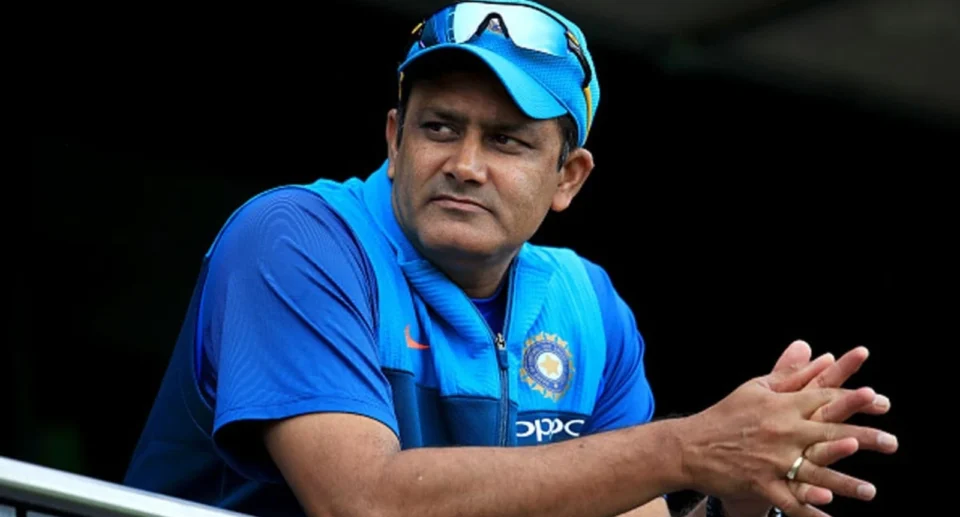Anil Kumble Biography: Life Story, Career, Records, Family & Achievements

Introduction
Anil Kumble, fondly called “Jumbo”, is one of India’s greatest bowlers and the highest wicket-taker for India in Test cricket. Known for his relentless accuracy, fighting spirit, and ability to outthink batsmen, Kumble was India’s spin spearhead for nearly two decades. A gentleman both on and off the field, he is remembered for his match-winning spells, leadership, and invaluable contributions as a coach and administrator after retirement.
Personal Information
- Full Name: Anil Radhakrishna Kumble
- Date of Birth: 17 October 1970
- Birthplace: Bengaluru, Karnataka, India
- Nationality: Indian
- Zodiac Sign: Libra
Physical Appearance
- Height: 6 feet 1 inch (185 cm)
- Weight: Approx. 78 kg
- Hair Color: Black
- Eye Color: Black
Early Life & Family Background
Kumble was born in Bengaluru to Krishna Swamy and Saroja. He developed an early passion for cricket and began playing in the streets of his neighborhood. He attended National High School and later earned a degree in Mechanical Engineering from Rashtreeya Vidyalaya College of Engineering (RVCE), balancing academics with cricket.
Domestic Career
- Represented Karnataka in Ranji Trophy, forming a formidable partnership with fellow spinners Javagal Srinath and Venkatesh Prasad.
- Consistent domestic performances earned him a place in the Indian team in 1990.
International Career
Debut Matches
- Test Debut: 9 August 1990 vs England.
- ODI Debut: 25 April 1990 vs Sri Lanka.
Career Highlights
- Test Cricket: 132 matches, 619 wickets (India’s highest wicket-taker), 35 five-wicket hauls, 8 ten-wicket match hauls.
- ODI Cricket: 271 matches, 337 wickets.
- Known for his never-give-up attitude, including bowling with a broken jaw against West Indies in 2002 and dismissing Brian Lara.
- Captained India in Tests from 2007–2008.
Iconic Moments
- 10 wickets in an innings (10/74 vs Pakistan, 1999 Delhi Test): Only the second bowler in history after Jim Laker to achieve this feat.
- Match-winning spells in the 1996 World Cup, 2003 World Cup, and several overseas Tests.
IPL & Coaching
- Played for Royal Challengers Bangalore in the IPL.
- Served as Head Coach of the Indian Team (2016–2017).
- Mentor for IPL franchises including RCB, Mumbai Indians, and Punjab Kings.
Records & Achievements
- 3rd highest wicket-taker in Test cricket at the time of retirement (619 wickets).
- Only Indian bowler to take 10 wickets in an innings in a Test.
- Padma Shri (2005) and Padma Bhushan (2008) recipient.
- Inducted into the ICC Hall of Fame (2015).
Personal Life
Anil Kumble is married to Chetana Ramatheertha, and the couple has three children – son Mayas and daughters Aaruni and Svasti.
Retirement & Beyond Cricket
Kumble retired from international cricket in November 2008, leaving behind a legacy as one of the greatest match-winners in Indian cricket. Post-retirement, he has worked as a coach, commentator, administrator, and mentor, continuing to shape Indian cricket.
Legacy
Anil Kumble is remembered as a fighter, leader, and role model who inspired generations with his discipline and determination. He carried India’s bowling attack for years, proving that hard work and consistency can achieve greatness even without extravagant spin. His iconic 10-wicket haul and selfless dedication remain etched in cricket history.
FAQs
Q1: How many wickets did Anil Kumble take in international cricket?
He took 956 wickets (619 in Tests and 337 in ODIs).
Q2: What is Anil Kumble’s most famous achievement?
Taking all 10 wickets in an innings (10/74 vs Pakistan, 1999 Delhi Test).
Q3: Did Kumble captain India?
Yes, he captained the Indian Test team between 2007 and 2008.
Q4: What did Anil Kumble do after retirement?
He served as India’s Head Coach (2016–2017) and as a mentor/administrator in cricket.
Q5: Has Kumble received national awards?
Yes, he received the Padma Shri (2005) and Padma Bhushan (2008).








